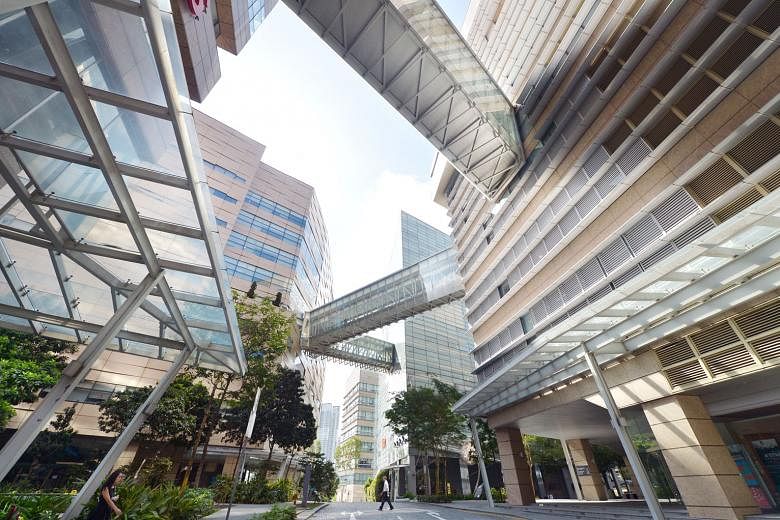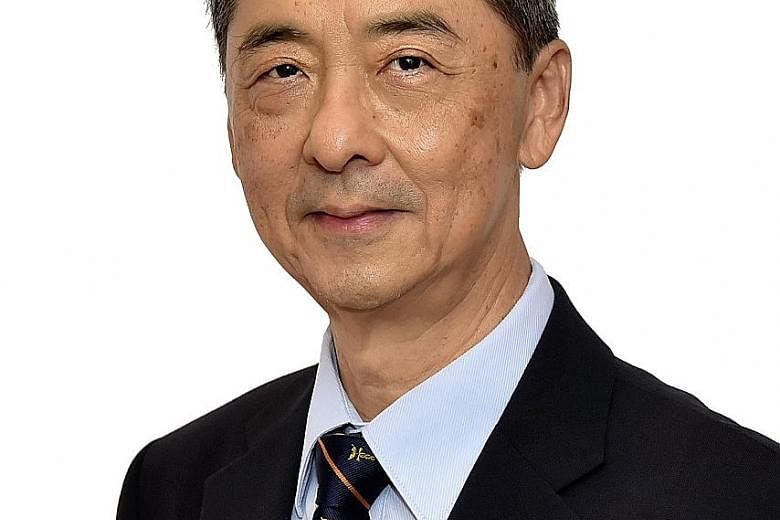It has been exactly a decade since my colleagues and I wrote about the need for more clinician scientists - or doctors who do research - in our healthcare ecosystem and the challenges faced by our young doctors who aspire to do so.
The national goal was to have 160 clinician scientists by 2015. We achieved two-thirds of our goal at the end of 2016.
Since the turn of this century, Singapore has invested heavily in biomedical research. This has led to the establishment of numerous world-class research institutes in the Buona Vista research hub Biopolis, and research centres of excellence at the institutes of higher learning, as well as the formation of academic medical centres such as the National University Health System (NUHS) and SingHealth.
We have been able to nurture a pool of home-grown scientists, as well as attract good scientists from abroad.
It is, however, not enough to do good science. It is essential to translate our research into better health outcomes.
Clinician scientists play a pivotal role in this. Because of their clinical and research training , they form an important bridge between scientists and clinicians. They are able to identify clinical problems through their contact with patients and formulate insightful scientific questions which can then be taken to the laboratory to find appropriate solutions.
The most obvious changes in the past 10 years have been the creation of a distinct path to train clinician scientists and the growth of a nurturing research environment for them. We have put in place residency training programmes specifically tailored to groom clinician scientists while they are doing their speciality training after completing their medical degrees.
There are now scholarships, research funding and salary support available for those who choose this career path.
The last decade has also seen the addition of two new medical schools here. Having three medical schools within the public healthcare clusters has provided greater opportunities to produce clinician scientists.
-
About the writer
-
Dr Lee Eng Hin is a professor of orthopaedic surgery at the Yong Loo Lin School of Medicine, National University of Singapore (NUS), and emeritus consultant in orthopaedic surgery at the National University Hospital, which are part of the National University Health System (NUHS).
He is also chief adviser of the Summit Research Programmes at NUHS. He was a former dean of the Faculty of Medicine, and former director, Division of Graduate Medical Studies, at NUS .
Dr Lee received his undergraduate and postgraduate medical training in Canada and specialises in paediatric orthopaedics.
He is acknowledged internationally as a leader in paediatric orthopaedics and is an elected member of the International Paediatric Orthopaedic Think-tank.
He is currently programme leader of the NUS Tissue Engineering Programme and is known for his research on stem cells in the musculoskeletal system, especially cartilage repair and regeneration.
His research has won him the Best Scientific Paper Award by the Paediatric Orthopaedic Society of North America twice.
He won the Outstanding Researcher Award from NUS in 2006 and the Outstanding Clinician Mentor Award from the Ministry of Health in 2008. He was given the Lee Foundation-NHG Lifetime Achievement Award in 2008.
Dr Lee is a deputy editor of the Journal Of Bone And Joint Surgery, co-editor of the Journal Of Bone And Joint Surgery Open Access, and is on the editorial boards of several international journals on orthopaedic surgery. He has more than 150 journal publications and more than 300 conference papers to his credit.
He has co-authored a book titled Stem Cells: From Bench To Bedside, which is used by many international centres as a reference and textbook for stem cell courses.
The explosion of biomedical knowledge in recent years has brought new technologies that will take us closer to the goal of more personalised medicine, new developments in disease biomarkers and therapeutics, the use of biologics such as stem cells, and even the ability to edit genes to modify the manifestation of rare diseases.
Coupled with these developments is the need for new models of care and transforming population health behaviour, banking on innovation and technology. The susceptibility of Asians to certain diseases and their response to treatments differ from those of Caucasians.
With our current capabilities in biomedical research, we have the opportunity to delve deeper into diseases that affect Asians, as Singapore is a microcosm of three major Asian ethnic groups - Chinese, Malays and Indians - which represent the Asian characteristics or phenotype in almost half of the world's population.
Pharmaceutical and biotech companies have recognised this and are coming to Asia to partner with scientists and clinicians to look for new solutions for Asian phenotypes.
We are living longer and the prevalence of chronic diseases is on the rise. More patients are surviving cancers in Singapore, but even more have been diagnosed with cancer, and at younger ages. Obesity rates are rising fast and diabetes has been identified as an endemic disease. Heart disease patients are getting younger and tuberculosis still affects about 1,500 people a year.
These huge medical challenges provide opportunities for our clinician scientists, academic medical centres and healthcare institutions to come up with impactful solutions.
To this end, NUHS set up its Summit Research Programmes (SRPs) in late 2016, focusing on six key areas: cancer, metabolic disease, tuberculosis, cardiovascular disease, synthetic biology, and a programme on the developmental origins of health and disease. These were chosen as they have a critical mass of excellent scientists and clinician scientists who are performing cutting-edge research on some of the most pressing healthcare challenges. These programmes are fertile ground for nurturing and growing our young clinician scientists.
For example, the cancer programme's main focus is on advancing the development of immunotherapy treatments in Singapore. Eight ongoing immunotherapy trials target a wide variety of cancers ranging from childhood malignancies to adult blood and solid cancers. Two of these studies - in breast and lymphoma cancers - have demonstrated good safety and seen promising patient responses.
The metabolic disease programme targets a key factor in battling diabetes by empowering diabetics to lead better lives using new therapies and drugs, and encouraging a lifestyle change.
Singapore's academic health systems are the perfect training ground for our clinician scientists. They provide an integrated value chain that allows them to seamlessly innovate, discover and apply their findings to patients. Apart from state-of-the-art laboratory equipment and facilities, clinician scientists must continue to be provided with dedicated time and space to be able to balance taking care of patients with research.
Having good role models and mentorship is equally important. Programmes such as NUHS' SRPs have a strong mentorship culture where budding clinician scientists are given the opportunities to learn from the best.
Finally, clinician scientists must be appropriately recognised and rewarded for the important work they do. This can come in many forms and include promotion and tenure, an equitable salary structure that does not discriminate unduly against them, as well as special awards or bonuses for impactful research work. Clinician scientists also stand to reap rewards from the intellectual property and technology revenue that could follow the discoveries that they make.
With such positive developments since 2007, I firmly believe that we are on the right trajectory to achieve our goal of nurturing the required number of clinician scientists to further our biomedical initiative and put Singapore on the map as a leader in impactful medical innovations and therapies.
The challenge then is for our talented young people to take on the clinician scientist role and lead the charge in building a healthier future. All it takes is courage and conviction; results and recognition will follow.
After all, our clinician scientists are our healthcare leaders of the future.


